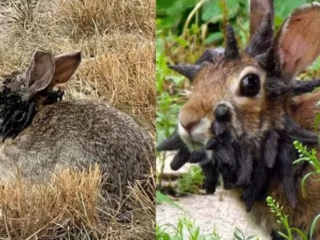Professors Josef Settele, Sandra Díaz and Eduardo Brondizio, along with Dr. Peter Daszak, have written an article for The Intergovernmental Science-Policy Platform on Biodiversity and Ecosystem Services (IPBES) titled: “COVID-19 Stimulus Measures Must Save Lives, Protect Livelihoods, and Safeguard Nature to Reduce the Risk of Future Pandemics.”
The article has dire warnings for us: Stop environmental destruction and the illegal wildlife trade now — or face another pandemic that could wipe out civilization.
The scientists warned that “Rampant deforestation, uncontrolled expansion of agriculture, intensive farming, mining and infrastructure development, as well as the exploitation of wild species have created a ‘perfect storm’ for the spillover of diseases from wildlife to people. This often occurs in areas where communities live that are most vulnerable to infectious diseases.”
The scientists then pointed out that animal-to-human diseases that already exist, like Ebola, rabies or avian flu, already “cause an estimated 700,000 deaths each year.” Deaths in 2020 will skyrocket due to COVID-19, but if nature isn’t protected and animals aren’t isolated from humans, the next pandemic, they warn, will be worse.
“Future pandemics are likely to happen more frequently, spread more rapidly, have greater economic impact and kill more people if we are not extremely careful about the possible impacts of the choices we make today,” the scientists write.
Another study published in the journal Landscape Ecology has identified some factors that bring humans and nonhuman primates into contact.
The researchers point out that the continued destruction of forest habitats, for agricultural use or human habitation, would cause this contact to become more frequent, as humans and nonhuman primates would be forced into closer proximity.
As a consequence, the chances of diseases transmitting from these primates to humans are also likely to increase.
Severe acute respiratory syndrome coronavirus 2 (SARS-CoV-2), which has caused the COVID-19 pandemic, is an example of a virus that spread from animals to humans.
Zoonotic pathogens
According to a review in the Proceedings of the National Academy of Sciences of the United States of America, more than half of all human pathogens are believed to be zoonotic, meaning that they first emerged in nonhuman animals and were then transmitted to humans.
A variety of interlocking factors have increased the chances of these pathogens spreading to humans.
The review notes that global, intensive agriculture has increased, climate change has transformed ecologies, habitats have been fragmented, biodiversity has been reduced, and humans have been placed in increasing contact with wildlife, either directly or through intermediary animals, such as intensively farmed livestock.
The present study focuses on the roles that deforestation and other human behaviors may have in increasing contact between humans and nonhuman primates, from whom many viruses that currently circulate among people derive.








